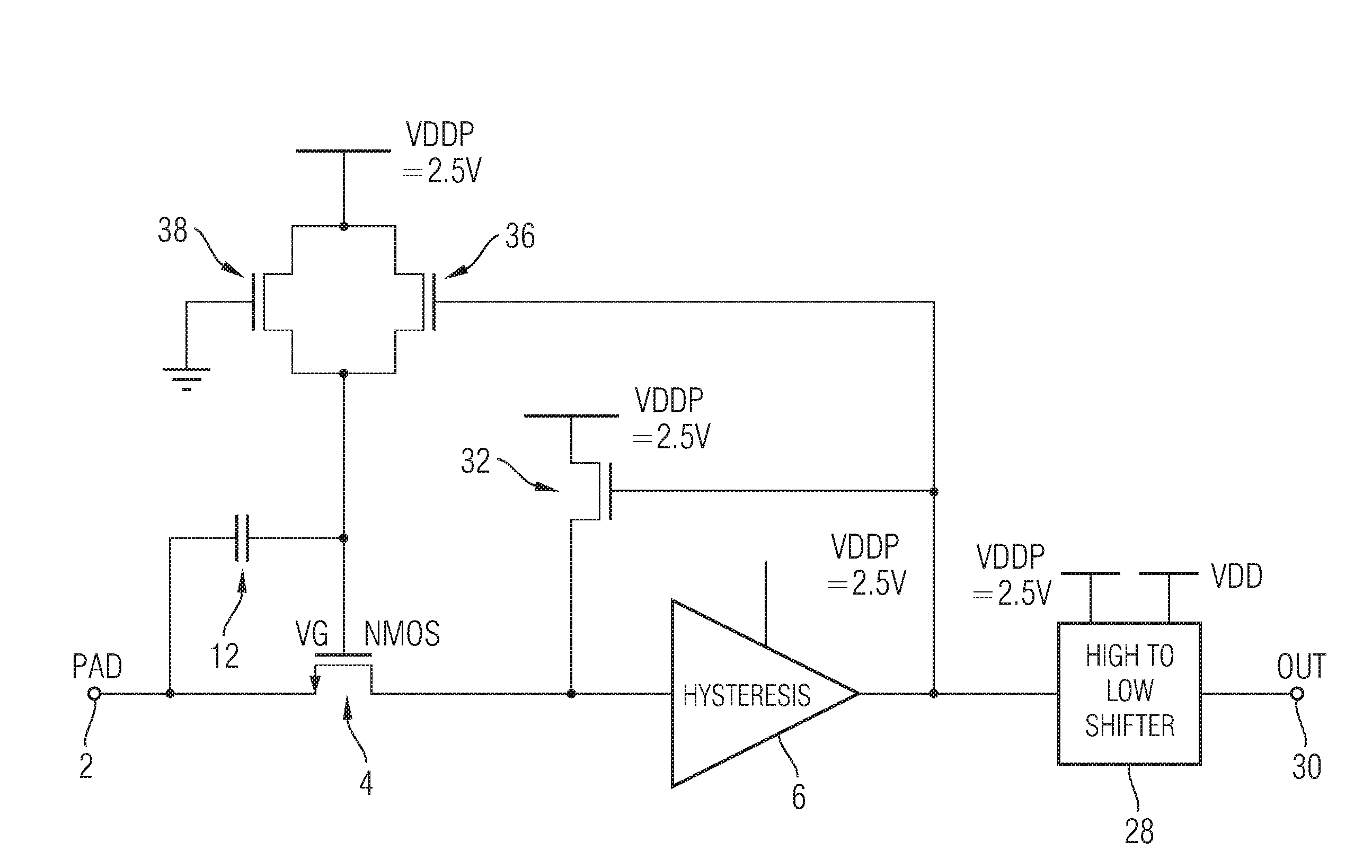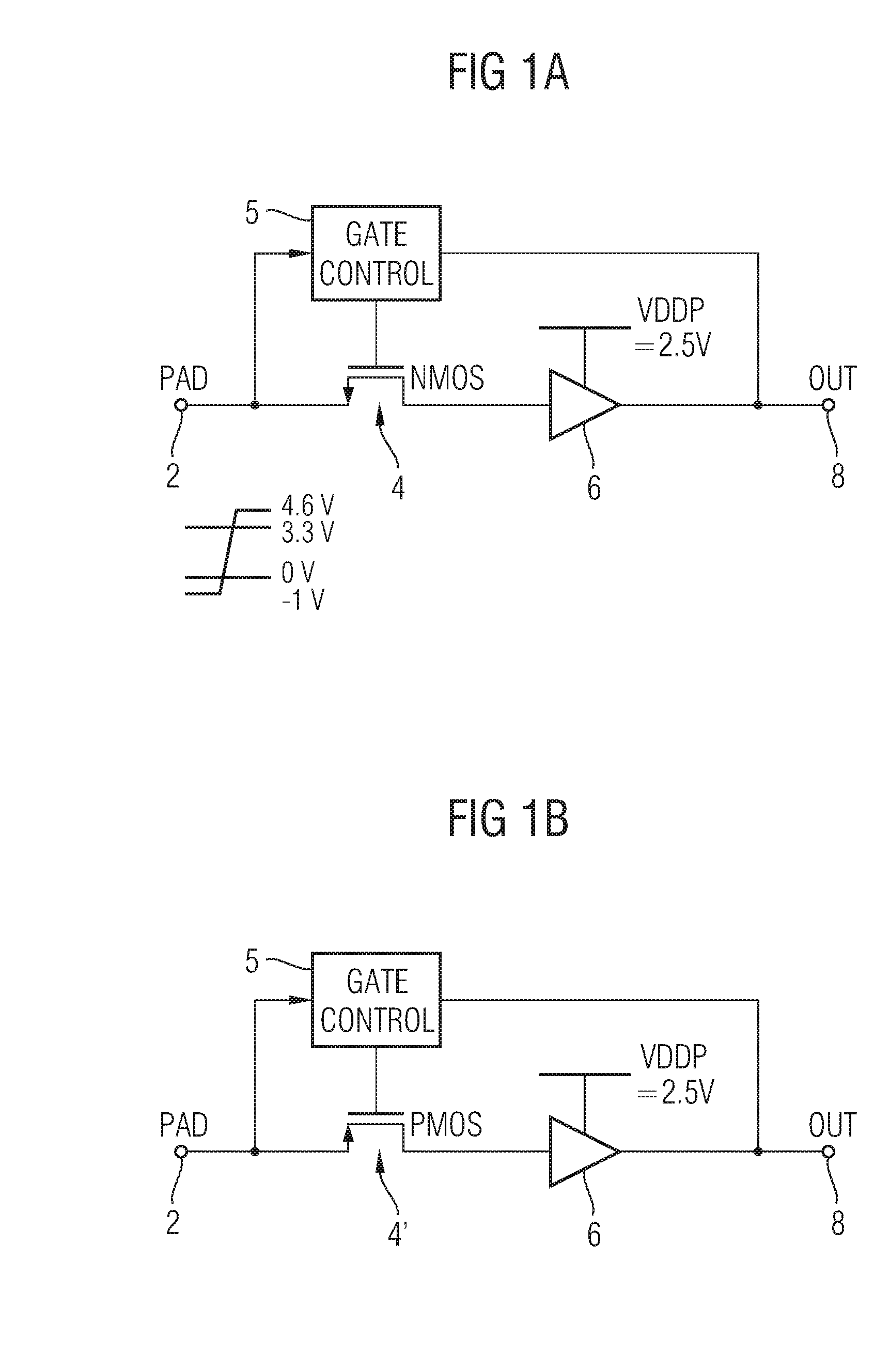Over-Voltage and Under Voltage Protection Circuit
- Summary
- Abstract
- Description
- Claims
- Application Information
AI Technical Summary
Benefits of technology
Problems solved by technology
Method used
Image
Examples
Embodiment Construction
[0043]FIG. 1a shows a circuit diagram of a protection circuit according to a first embodiment of the invention. FIG. 1b shows a circuit diagram of a protection circuit according to a second embodiment of the invention. FIGS. 1a and 1b illustrate the basic principles behind the invention.
[0044]Referring to FIG. 1a, an incoming signal is applied to a pad 2 which is connected to the source of a pass transistor 4 (which is an NMOS transistor) and also to one input of a gate control circuit 5. The gate of the pass transistor 4 is connected to the output of the gate control circuit 5 and the drain of the pass transistor 4 is connected to the input of a hysteresis inverting stage 6. The output of the hysteresis stage 6 is connected to a further input to the gate control circuit 5 and also to an output 8 of the circuit.
[0045]The present invention is of particular applicability to a Universal Serial Bus (USB) receiver circuit. The normal signaling level for a USB is 0 to 3.3 V. However, the ...
PUM
 Login to View More
Login to View More Abstract
Description
Claims
Application Information
 Login to View More
Login to View More - Generate Ideas
- Intellectual Property
- Life Sciences
- Materials
- Tech Scout
- Unparalleled Data Quality
- Higher Quality Content
- 60% Fewer Hallucinations
Browse by: Latest US Patents, China's latest patents, Technical Efficacy Thesaurus, Application Domain, Technology Topic, Popular Technical Reports.
© 2025 PatSnap. All rights reserved.Legal|Privacy policy|Modern Slavery Act Transparency Statement|Sitemap|About US| Contact US: help@patsnap.com



